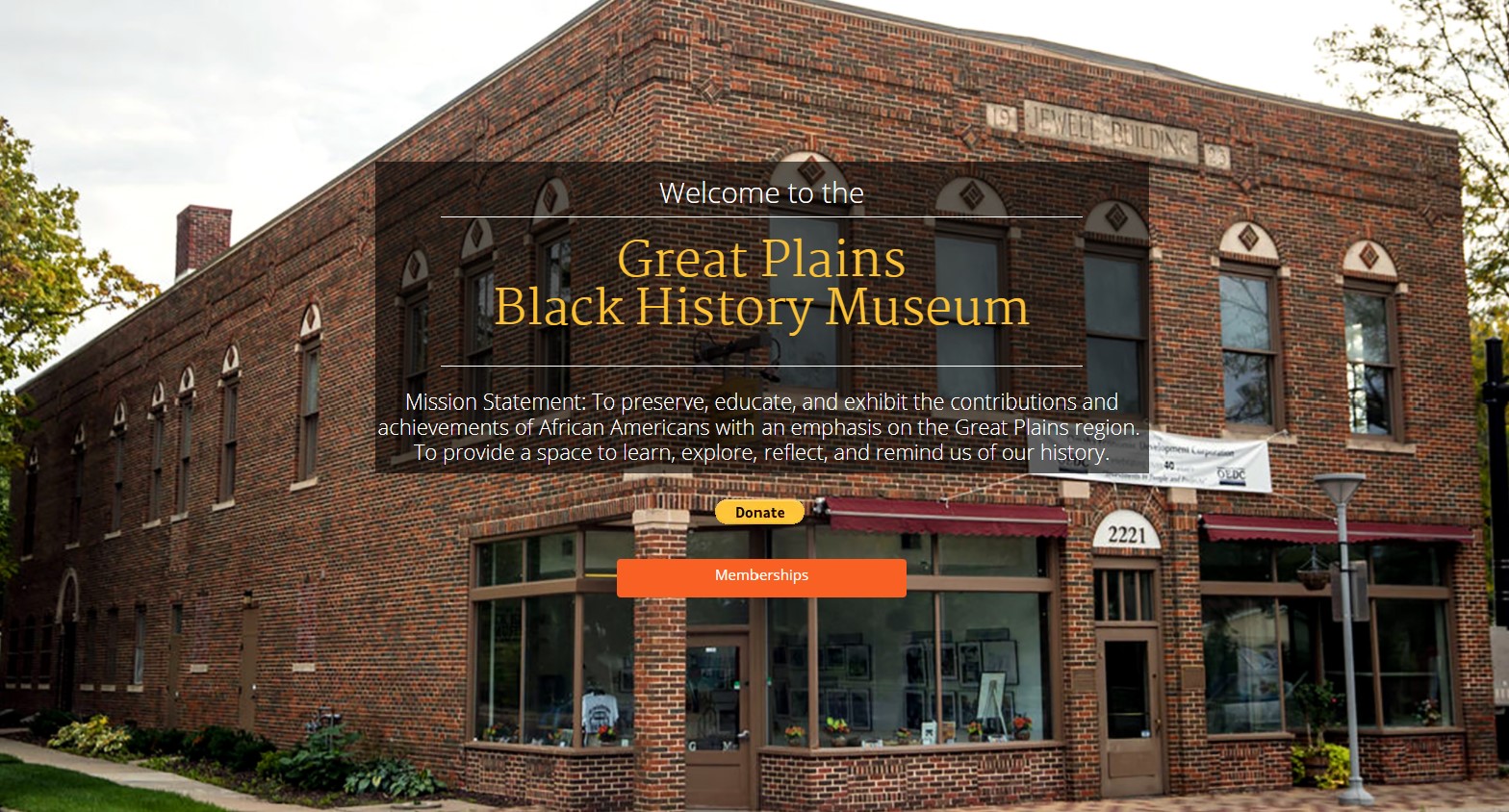
American History through the lens of African Americans
The Great Plains Black History Museum (GPBHM) near 24th and Grant streets is the only African American history museum in Nebraska. Bertha Calloway founded GPBHM in 1976 as a resource for the community. The museum highlights American history through the lens of African Americans.
GPBHM provides a space to learn, explore, reflect, and remind us of our history through a variety of permanent and temporary exhibits. In 2020, they began offering virtual tours, which has allowed the museum’s executive director, Eric Ewing, to reach more people.
“Last year, we were able to serve over 39 different states, and we reached audiences in three different countries. So, I think our virtual imprint has grown, and we’ve been of more service to a lot more people that we would not otherwise been able to serve,” Eric told WOWT on February 11 of this year.
Habitat Omaha staff members had the opportunity to learn more about the history of African Americans in our community during a virtual tour of the following exhibits:
- The History of the DePorres Club: A look at one of Omaha’s Civil Rights Groups from the 1940s-1950s that changed the hiring practices of businesses in Omaha.
- Hate and Hope: A look at the history of lynching in the Great Plains of America and African Americans who inspired hope and equality.
- 24th and Glory: A condensed exhibit that looks at the history of African American athletes in Omaha.
- Black Citizenship in the Age of Jim Crow: A look at African Americans’ struggle for citizenship in America.
- The Tuskegee Airmen who Called Nebraska Home and African Americans who Served: A look at Tuskegee Airmen who lived in Nebraska. The history of the Tuskegee Airmen and local African Americans who served in the military.
- The Black Experience Through the Lens of Rudy Smith: A condensed exhibit that takes a brief look at Rudy Smith’s history, an African American photojournalist.
“During a time of heightened racial violence and injustice, it can be difficult to recognize and celebrate all of the achievements that people of color have accomplished. To be able to see articles, pictures and artifacts documenting the efforts that the Omaha African American community has put forth over the years to end discrimination and unfair treatment of our people was a truly eye-opening experience. It left me feeling humbled but also extremely proud to be a part of the movement,” said Nicky Sullivan, Habitat Omaha’s Homeownership Success Supervisor.
There will be a new exhibit in March that will focus on the herstory, as Eric puts it, of African American women. Anyone interested in scheduling a virtual or in-person tour can do so by visiting gpblackhistorymuseum.org. Eric will be happy to go through each exhibit answering questions along the way.
“It’s an opportunity for everyone, whether they’re a part of the community or a part of other communities, to also learn about this rich history,” Eric told WOWT. “It helps [young people] build their self-pride, you know, it lets them know and learn about events that may have happened on the very same streets in which they’re walking.”

